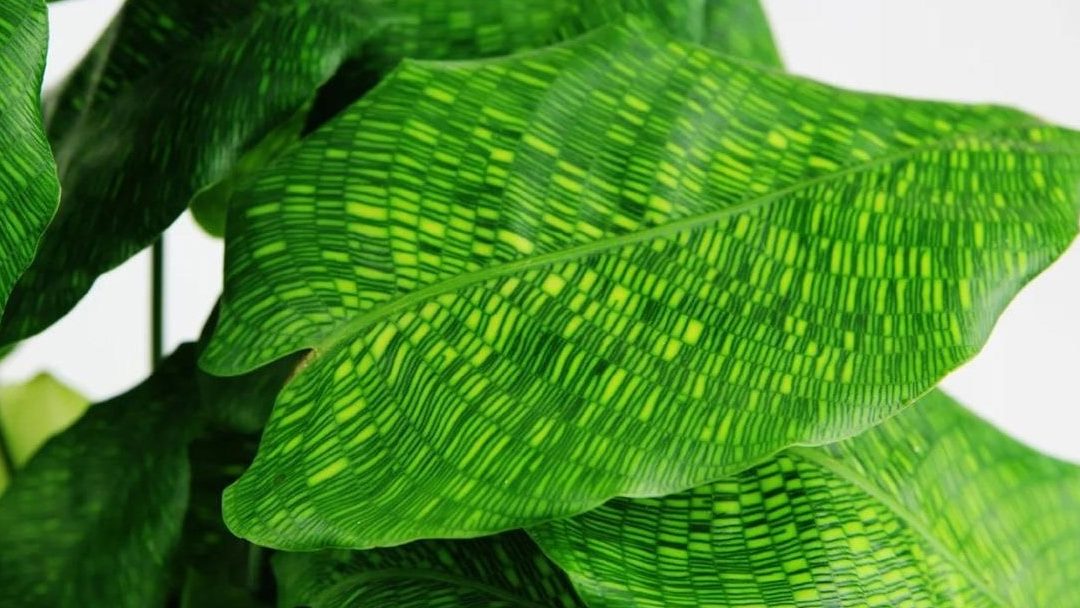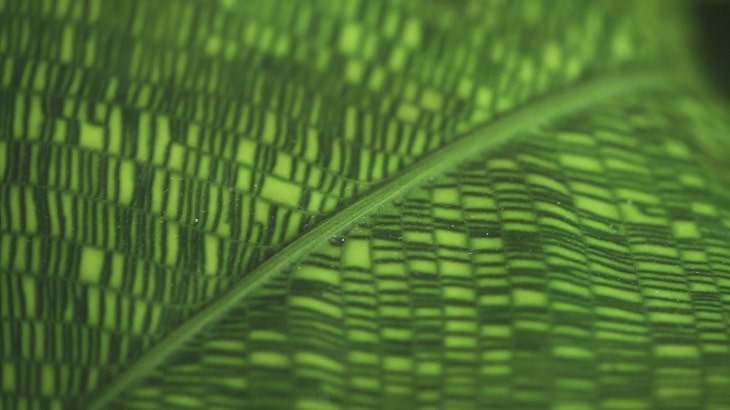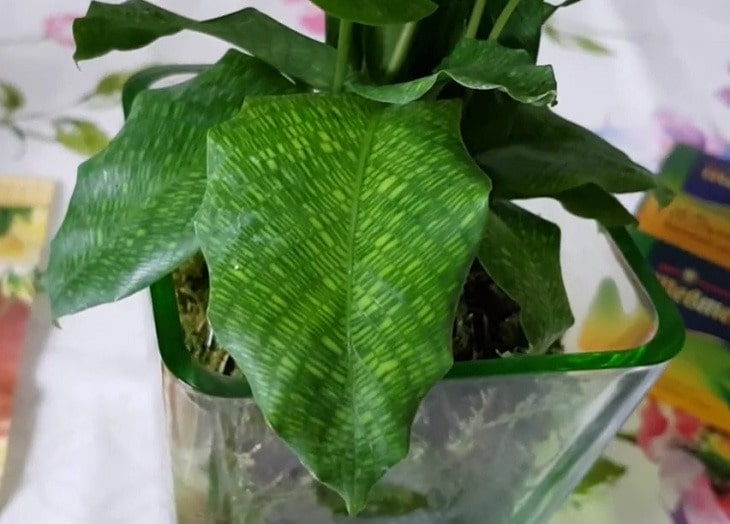Calathea Musaica got its name from the structure of the leaves. They seem to be covered with a net. To other people, the pattern resembles a mosaic, so the plant can be found under that name.
The main tone of the leaves of this flower is light green, there are darker convex dashes and yellowish areas on it. These bright green sticks form irregular rectangles that look like a net from a distance.
Young leaves are lighter than old ones. This is typical for all types of Calathea.
The shape of the leaves can be compared to the image of a heart or the tip of a spear. The plates are large, and leathery, because of the convex pattern, they vaguely resemble corrugated cardboard to the touch.
The central vein is clearly expressed, and the pattern on each plate is individual.
The reverse side of the leaf plates is also painted in a light green shade. It clearly shows the stripes of the pattern. But it does not shine and has a less saturated color.
Calathea Musaica is inferior in size to many other varieties. In an adult bush, the length of the plate reaches 20-25 cm. The petioles on which they are located are short, so the plant is low.
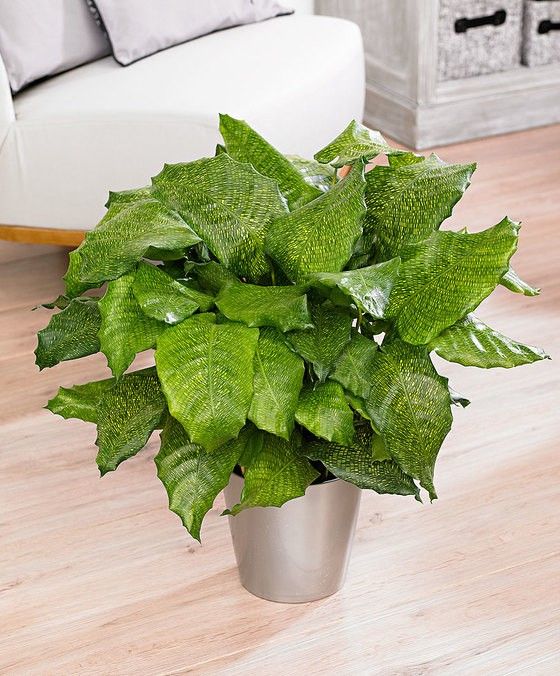
The overgrown Calathea Musaica is a wide and spreading bush. Its diameter can exceed its height by 1.5-2 times.
The Calathea Musaica is valued only for its beautiful and unusual leaf pattern. But she can also bloom. The buds appear in spring and last only a few days.
The peduncle is short, and flowers, similar to disheveled panicles, are hidden under large leaves near the ground.
Flowering begins after 3 years of life, provided that the bush has filled the entire pot.
Table of Contents
Care for Calathea Musaica
The Calathea Musaica is recommended for those who dry out other types of Calathea. It easily tolerates low humidity and can forgive the grower for skipping watering.
Temperature
Although Calatheas are native to tropical forests, they do not like heat. The optimum temperature is 20-24°C. Cool wintering Calathea Musaica is not required.
The Calathea Musaica is able to tolerate a decrease in air temperature up to 16 ° C. Do not keep it in the heat at 28 ° C and above.
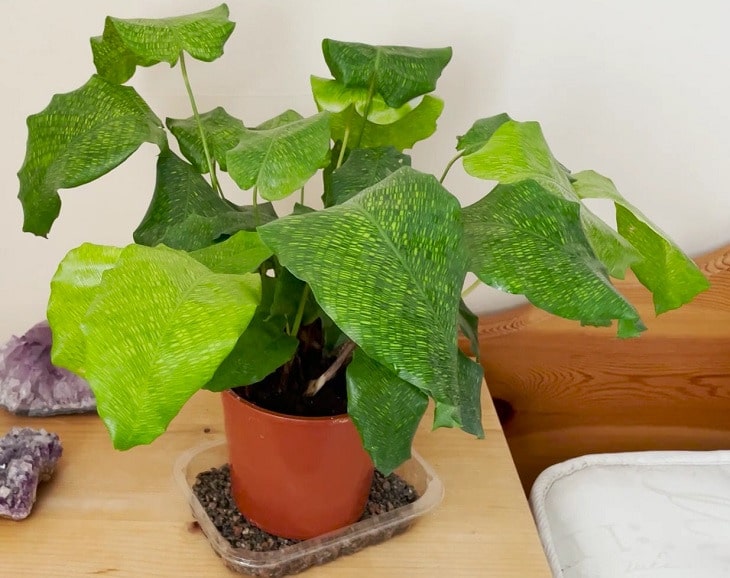
If there is no way to cool the room, you need to increase the humidity.
Avoid sudden changes in temperature and strong drafts. But unlike most other types of Calathea, the Calathea Musaica is able to tolerate regular airing of the room.
The Calathea Musaica does not need to be covered or taken out if it stands near the window. The exception is the period of severe frosts.
Lighting
Calathea Musaica is undemanding to lighting. In partial shade, it will have a darker shade, in diffused light it will be lighter. But its decorative pattern will remain in any case.
Just don’t let it get in direct sunlight. It can cause leaf burns.
Watering The Calathea Musaica
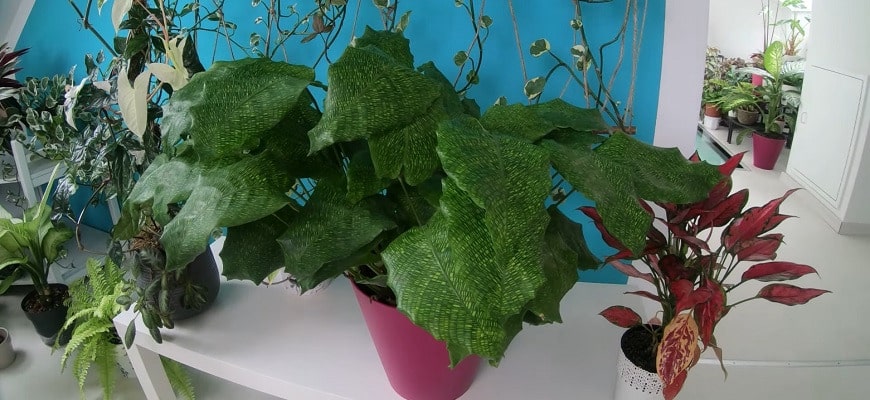
Enough one plentiful watering per week. If the room is hot, you can increase the frequency up to 2 times in 7 days.
It is necessary to water the plant only if the top layer of soil has dried out by 2-3 cm. Calathea Musaica is less resistant to bays than to a slight drought.
When watering the Calathea Musaica use settled water at room temperature. They make sure that it does not stand at the petioles of the leaves, but is quickly absorbed.
Do not leave the roots of the plant in water for a long time. All the liquid that has leaked into the pan is drained after 10-15 minutes.
Humidity
The optimal humidity for Calatheas is 90%. But Calathea Musaica perfectly tolerates the level of 55-60%.
One spray per week is enough for such a plant so that dust does not accumulate on it.
But if the air in the room is very dry, for example, in winter due to the operation of heaters, then it is better to spray the Calathea Musaica every day.
For this, soft, settled water at room temperature is also used. The spray bottle should be small so that large drops do not settle on the flower.
Top Dressing

Calathea Musaicas do not need a lot of feeding. An excess of nutrients in the soil inhibits the plant.
The best option for fertilizing Calathea Musaicas is a ready-made complex top dressing designed for decorative and deciduous plants. But you need to use only 1/2 of the dose recommended on the package of the drug.
It is not recommended to use “folk” recipes, such as infusions of chicken manure, mullein, onion peel, or banana peel.
When using them, it is impossible to calculate the dosage of nutrients, so it is easy to “overfeed” the flower.
Fertilizers begin to be applied no earlier than 2 months after transplantation. They are given until October, and then they take a break.
Trimming and Shaping
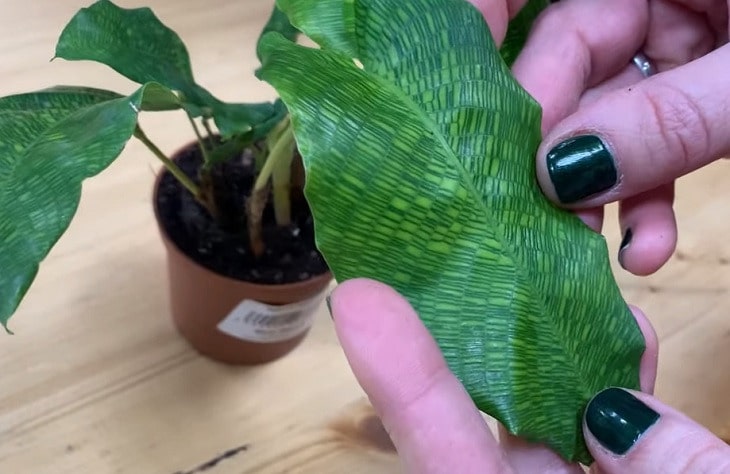
Calathea Musaica perfectly holds leaves and does not need support. It is also not necessary to form its crown.
The only thing the florist has to do is to get rid of dried leaves.
If the plate is partially damaged by drought or disease, it is better not to remove it entirely, but to cut off only the damaged areas.
If the Calathea Musaica leaf is completely dry and yellowed, it is cut as close to the ground as possible.
Transfer
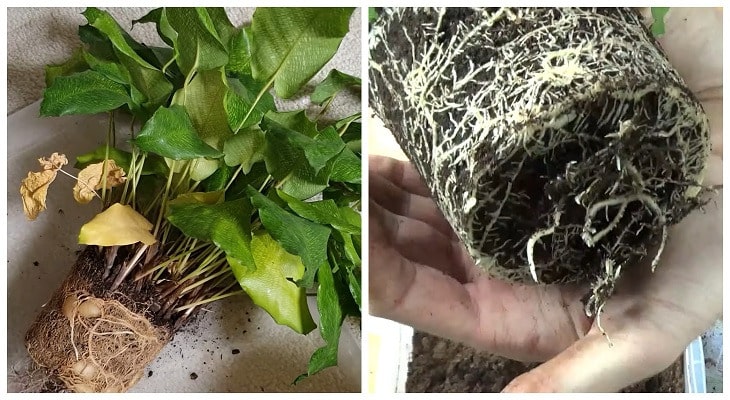
Calathea Musaica needs a timely transplant. Young bushes need to be moved to a larger pot every spring.
A copy older than 3 years that has not yet been divided slows down growth and can live up to 2 years in one pot.
But it is important to prevent a situation where the root system of the flower completely displaces the soil. Because of this, the Calathea Musaica plant will begin to turn yellow and may die.
The bush on the left has obviously not been transplanted for too long. The roots have grown and displaced the soil, so the plant began to turn yellow. In the photo on the right, the transplant time was chosen in the best way.
The pot for Calathea Musaica is taken low, but wide. It should be 2-3 cm larger in diameter than the previous container.
It is desirable to use a soil based on Biohumus. Peat substrates have less moisture permeability and quickly crumple.
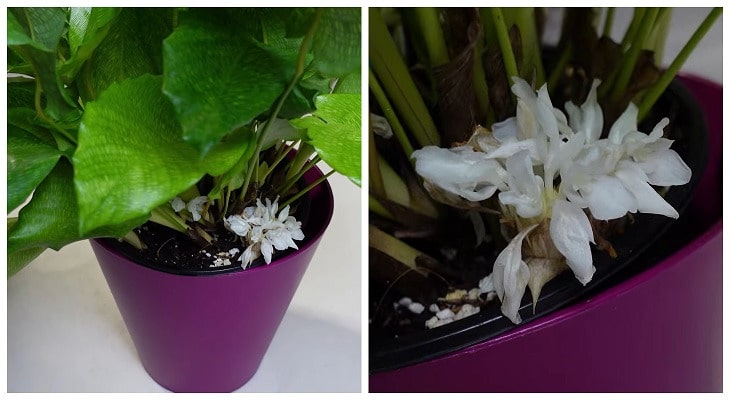
Calathea Musaica has delicate roots that are easy to injure. Therefore, the best option is transshipment:
- Drainage and fresh soil are poured at the bottom of the new pot;
- Some gardeners remove the Calathea Musaica from the old container and put it in the center of the new one, without destroying the earthen clod;
- Fill voids with fresh soil;
- Watered and put in partial shade.
After planting in fresh soil, the Calathea Musaica is watered and sprayed with fungicides. The treatment is repeated after 1-2 weeks, depending on the recommendations of the manufacturer of the selected drug.
A plant with a damaged root system during transplantation is placed in a greenhouse – covered with a transparent plastic container or film. It is sprayed every day with water with the addition of Zircon (2 drops per 0.5 l of water).
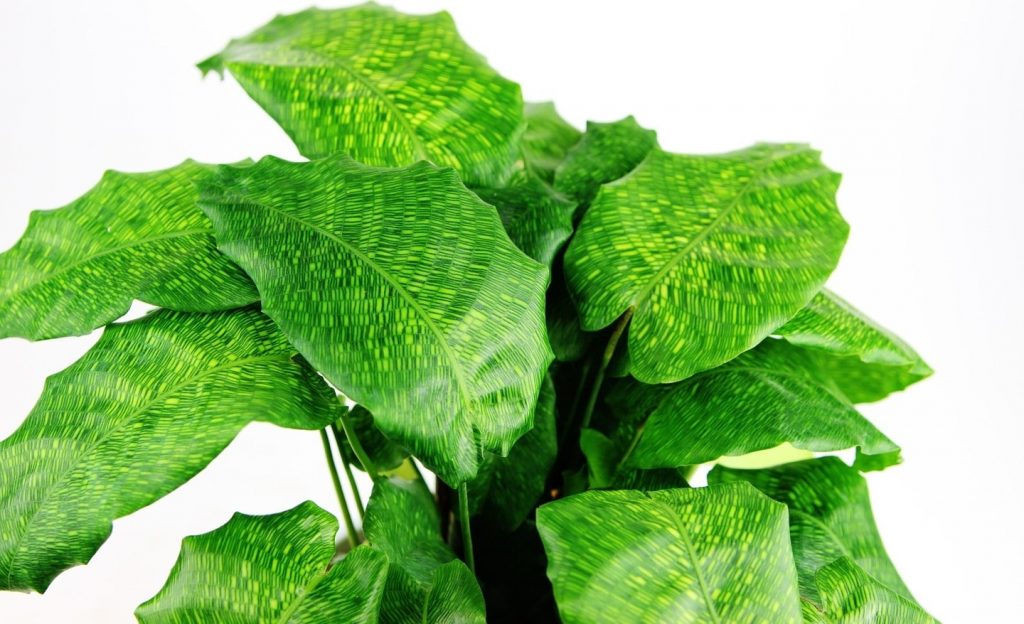
The main thing in this situation is not to flood the plant. If the leaves curl and dry, then this is not from a lack of moisture, but as a result of the fact that the roots cannot yet perform their function.
Reproduction of Calathea Musaica
Calathea Musaica is propagated during the next transplant by dividing the bush. To do this, you must select an instance older than 3 years.
At least 3-4 sheets should remain on each division. Too small specimens are more likely to die.
The resulting plants must be placed in a greenhouse and sprayed daily.

The greenhouse is removed only after new leaves appear on the Calathea Musaica plant. This is a sign that the root system has fully recovered from the division.
Conclusion
By following the tips mentioned above, you can ensure success in growing and caring for Calathea Musaica. However, if you’re eager to explore other captivating varieties of Calathea, we invite you to read our comprehensive care guide for Calathea Roseopicta. Expand your plant collection and delve into the fascinating world of Calatheas. Happy Gardening! 🙂

